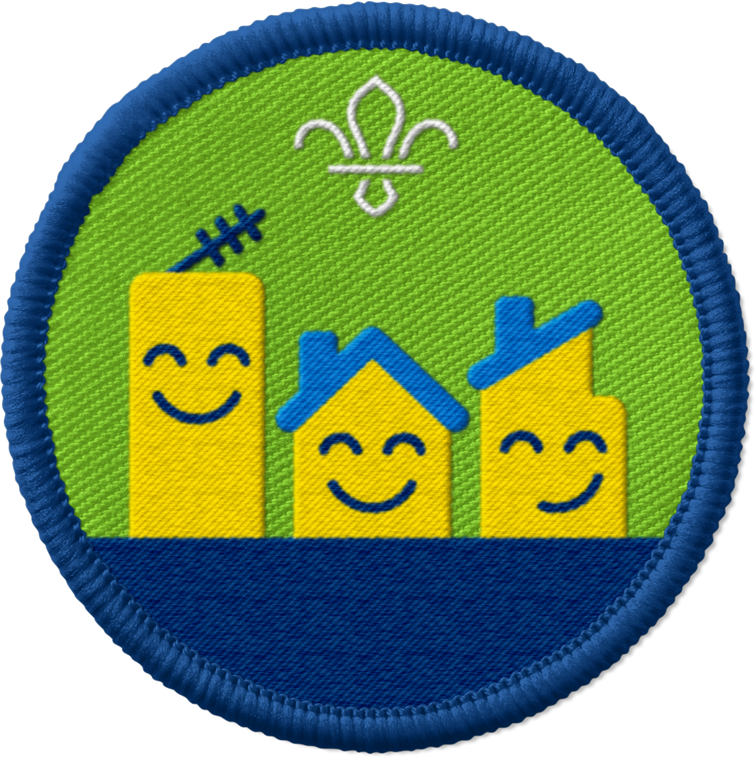
Interesting interactions
You’ll need
- Scrap paper
- Pens or pencils
- Coloured pens or pencils
- Scissors
- Coloured card or paper
Before you begin:
- Use the safety checklist to help you plan and risk assess your activity. Additional help to carry out your risk assessment, including examples can be found here. Don’t forget to make sure all young people and adults involved in the activity know how to take part safely.
- Make sure you’ll have enough adult helpers. You may need some parents and carers to help if you’re short on helpers.
Please note: This activity can be done by everyone. Though this activity’s partnered with the National Autistic Society, the theme's Understanding Disability. Therefore, this activity is about learning about sensory differences, which aren't always necessarily linked to having autism. It’s about learning to see that people interpret the world in different ways, and we can understand other people’s perspectives, reactions, points of view to be respectful and accommodating to them.
We’re all different
- Gather everyone together and sit in a circle.
- Explain that this game is all about how people are different – and how people sometimes interpret (or see) the world differently to others.
- Give everyone a sheet of paper and a pencil.
- Now, everyone should think about what a person looks like.
- When ready they should draw the outline of a person on their paper.
- Next, everyone should pass their paper to the person next to them. Everyone should draw some hair on their new person.
- When everyone’s done drawing, they should pass their paper on again. They should add some facial features, such as eyes, a nose and a mouth to the drawing.
- Everyone should keep passing their drawings on and adding different features, such as clothes, shoes, glasses or anything else you can think of. You could also extend the game by drawing a background or a scene and add things like houses, animals, clouds, or trees.
- Keep going until you have a set of complete pictures.
- Once completed, everyone should share their finished pictures with the whole group. Does anyone want to point out their favourite parts of some of the drawings?
Learning more about sensory differences
- Explain that everyone was asked to draw the same things and everyone was given the same instructions, so everyone drew a body, some hair, eyes and so on – but our pictures ended up being very different. All the different drawings shows us that we all interpret (or see) the world differently.
- Next, explain that some people have sensory differences – this means they experience the world a bit differently, too.
- Explain that sensory differences means that someone's senses, such as sight, sound, smell, taste, and hearing, might be more or less sensitive.
- Tell everyone that if someone has sensory differences it might not always be obvious. We might not be able to see that a person has them. However, it can make some things more difficult for them or they may sometimes get more easily overwhelmed by their surroundings. You could then explain that autistic people often have sensory differences, too.
- One example of sensory differences is that one person may find the level of noise during a game OK, but someone else may need to wear ear defenders because they hear the game differently. That makes them more comfortable, and we should be understanding and respectful of this.
- Tell everyone that there are many simple adjustments that can be made to make environments better for people with sensory differences. We might not use flashing lights, have quiet spaces, provide sunglasses or ear plugs, or allow people to wear clothes they’re comfortable in.
Reflection
This activity was all about caring and respecting others. It’s designed to help explore how everyone sees the world differently, and what people can do to support each other.
Play the game
- Ask how everyone found the game. Did everyone draw different things?
- If you played a different game, was it easy to help everyone feel included? What did people find the easiest or most difficult parts?
- Ask everyone to think about how they might feel living with sensory difficulties. How might they spot someone who’s struggling, and what could they do to help them?
Safety
All activities must be safely managed. You must complete a thorough risk assessment and take appropriate steps to reduce risk. Use the safety checklist to help you plan and risk assess your activity. Always get approval for the activity, and have suitable supervision and an InTouch process.
- Scissors
Supervise young people appropriately when they’re using scissors. Store all sharp objects securely, out of the reach of young people.
Make the first part of the activity easier by starting start with a basic silhouette already drawn to speed up the game.
Make it accessible
All Scout activities should be inclusive and accessible.
Explore the theme of understanding disability more with some other activities supported by the National Autistic Society.

